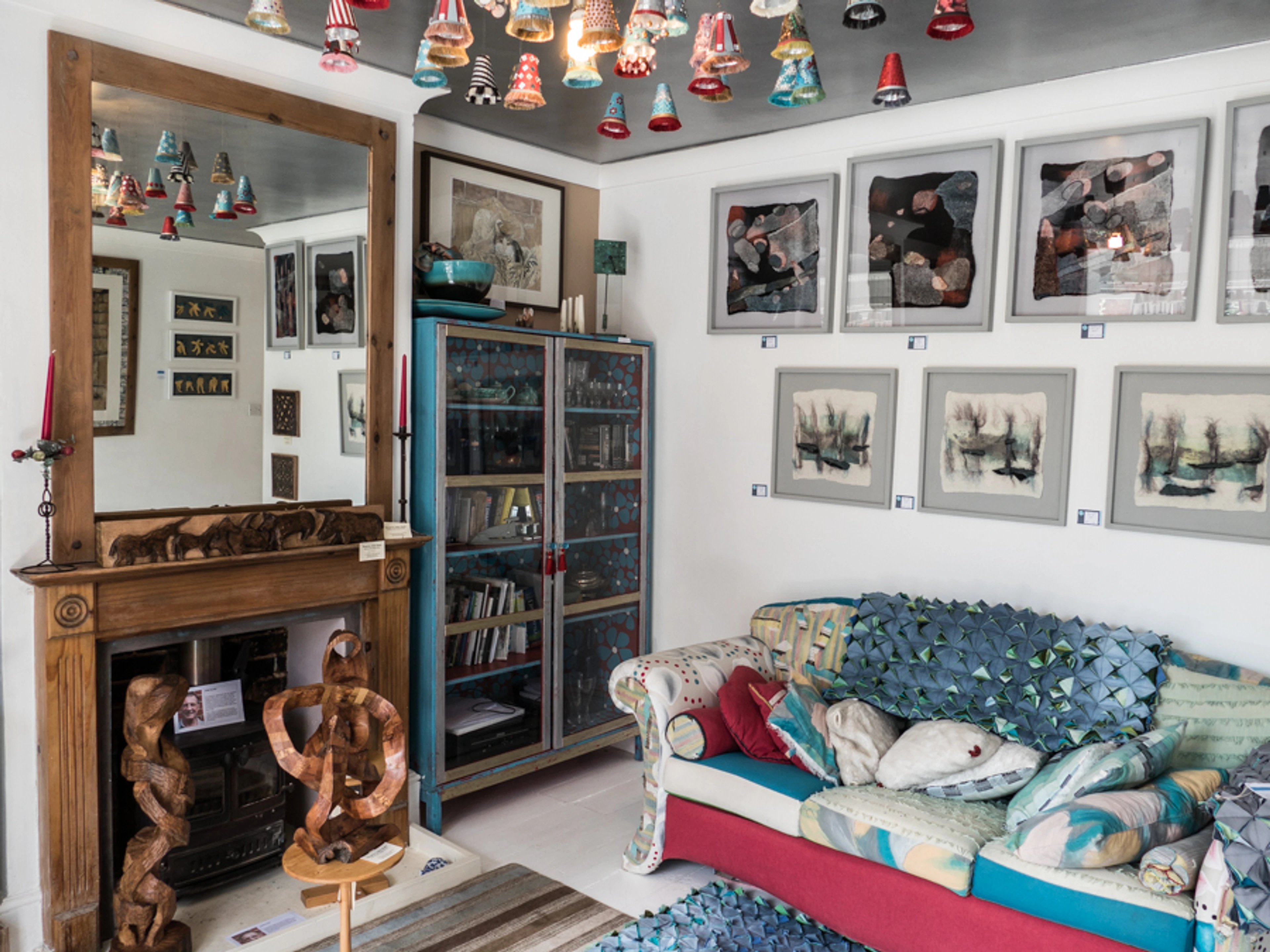
Choosing Durable Art for High-Traffic Areas: An Artist's Guide
Choosing art for busy areas? As an artist, I share personal tips on selecting durable pieces, protecting your art from everyday life (kids, pets, vacuum cleaners!), and finding beauty even amidst the chaos of high-traffic spots like kitchens, hallways, and offices. Learn about materials, framing, placement, specific cleaning tips, insurance, and what to do if damage occurs.
Choosing Art for High-Traffic Areas: Durability Tips from an Artist
Okay, let's talk about life. Real life. The kind with kids, pets, clumsy friends, vacuum cleaners, and maybe even the occasional rogue frisbee indoors (don't ask). We love our art, right? We want it to be seen, to live with us, to be part of the vibrant, sometimes chaotic, tapestry of our homes or offices.
I remember one particularly memorable incident involving a very enthusiastic puppy and a low-hanging canvas. Let's just say the puppy was fine, the canvas... less so. It was a stark reminder that while art feeds the soul, it also exists in the physical world, a world full of potential bumps, scrapes, and unexpected slobber. Or the time a friend's toddler, armed with a sticky lollipop, decided a framed print was the perfect place to rest their hand. These moments got me thinking: how do you choose art for high-traffic areas without constantly hovering like a nervous parent? How do you balance beauty with brute reality? As an artist who's seen my fair share of accidental bumps and scrapes (both on my work and, well, me), I've given this some thought. It's about being smart, not sacrificing style.
I even had a piece, a vibrant abstract on canvas, hanging in my own hallway – a place that sees backpacks flung, dogs shaking off rain, and the relentless quest of the vacuum cleaner bumping along the baseboards. One day, a particularly energetic game of chase resulted in a corner getting snagged. It wasn't a huge tear, but it was there. It felt like a little piece of my creative soul had been nicked. It made me realize that even in my own space, where I live and breathe art, I needed to be more intentional about where and how I displayed pieces, especially those I was emotionally attached to. It's a balance, isn't it? The desire to share your world with your art versus the reality of, well, life happening.
Why High-Traffic Areas Are Art's Arch-Nemesis
High-traffic areas – think hallways, entryways, kitchens, kids' rooms, office lobbies, or even busy living rooms – are basically obstacle courses for anything fragile. These are the places where:
- People are constantly moving, increasing the risk of accidental impact or abrasion. (Beware the surprising velocity of a swinging backpack!)
- Things get carried, dropped, or swung around – hello, rogue backpack or vacuum cleaner bumping along the baseboards! (Those things seem to have a magnetic attraction to anything remotely fragile, don't they? It's like they know.)
- Walls get brushed against, leading to scuffs and dirt accumulation.
- Temperature and humidity might fluctuate more (near doors, windows), potentially affecting sensitive materials like paper or wood. Consistent environmental conditions are key for art preservation, and busy areas often make this challenging. Using a simple hygrometer/thermometer can help you monitor these fluctuations, especially near external walls or vents.
- Sunlight might be a constant issue, causing UV damage and fading over time if not protected. Protecting Your Art from Sunlight is a whole topic in itself.
- There might be smoke from cooking or a fireplace, leading to surface grime. (That greasy film is art's worst nightmare).
- Pets might scratch, chew, or rub against surfaces, or even contribute unexpected moisture (remember that puppy?).
- Heavy foot traffic or nearby doors slamming can cause vibration, potentially loosening poorly secured wall art.
A beautiful, intricate watercolor on thin paper? Probably not the best fit for the narrow hallway where everyone dumps their bags. A large piece in a tight space is also inherently more vulnerable to accidental contact. And let's not forget the sheer volume of stuff that passes through – shopping bags, backpacks, vacuum cleaners bumping along the baseboards. It's a wonder anything survives! These cumulative factors present a unique challenge, demanding careful consideration when selecting and displaying art.
Beyond the physical risks, there's the psychological toll. Constantly worrying about a piece of art can detract from the joy it's meant to bring. You don't want to feel like a museum guard in your own home or office. The level and type of traffic also vary greatly – a busy family hallway is different from a quiet office corner or a public reception area. Each space requires a slightly different risk assessment. Have you ever had a piece damaged by something completely unexpected in a busy spot?
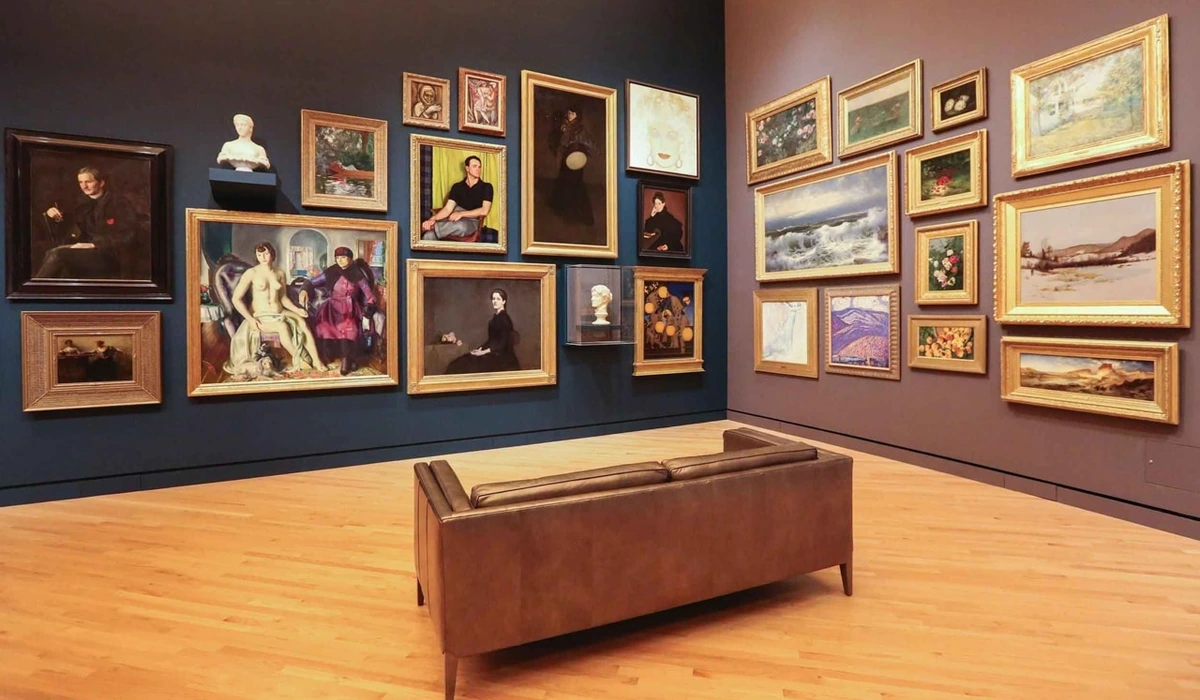
https://mastersatart.com/, https://creativecommons.org/licenses/by-nc/4.0/
Specific Challenges in Different High-Traffic Zones
Let's break down some common culprits:
- Hallways & Entryways: These are prime zones for bumps from bags, coats, and people squeezing past. Art here is vulnerable to direct impact and scuffs. Think about the height – kids' heads, backpack corners, vacuum cleaner handles. It's a gauntlet!
- Kitchens: Beyond physical contact, kitchens introduce unique environmental hazards: grease, steam, food splashes, and fluctuating temperatures/humidity. Art needs to be easily cleanable and resistant to moisture and grime. How to Decorate a Kitchen has specific considerations for this space.
- Kids' Rooms & Play Areas: This is where art faces the ultimate test. Crayons, sticky fingers, thrown toys, climbing, and general roughhousing are par for the course. Durability against impact, abrasion, and easy cleaning are non-negotiable. Choosing Art for Homes with Kids & Pets delves deeper into this.
- Offices & Lobbies: While perhaps less chaotic than a kids' room, public or semi-public spaces see constant foot traffic, cleaning crews, and potential for accidental contact from visitors or staff carrying items. The need for a professional appearance also means damage is highly undesirable. Security against theft or tampering can also be a consideration; for valuable pieces in public areas, consider security hardware like security hooks that require a special tool to remove. The Corporate Canvas: A Personal Guide to Buying Art for the Office offers tips for corporate spaces.
- Busy Living Rooms: Even in a home, a living room with active kids, pets, or frequent entertaining can pose risks from spills, dropped items, or people leaning against walls. Placement becomes key here. How to Decorate Your Living Room can help with layout ideas.
- Bathrooms: High humidity and temperature fluctuations are the main culprits here, along with potential water splashes and cleaning product exposure. Art needs to be highly moisture-resistant. Bathroom Art Guide: Style & Survival in Steamy Spaces covers this in detail.
Understanding these specific battlegrounds helps tailor your art choices and protection strategies.
Choosing Your Battles: Durable Art Mediums
Not all art is created equal when it comes to toughness. Some mediums are inherently more resilient than others. Understanding why certain materials hold up better can help you make informed choices. Here's a quick rundown:
Durable Choices
- Prints (especially on metal or acrylic, and framed paper/posters): These can be surprisingly durable. Metal prints are often made by infusing dyes directly into a coated aluminum sheet, making them incredibly scratch-resistant, waterproof, and easy to clean due to the inherent hardness and non-porosity of the metal and coating. They can, however, dent if struck sharply, particularly on the edges or corners. Acrylic prints involve printing on high-quality paper and then mounting it behind a clear acrylic sheet. The acrylic, a type of plastic polymer, provides a protective layer against UV light, dust, and minor physical contact because of its density and clarity. The acrylic itself is shatter-resistant (unlike glass) but can be prone to scratching if not cleaned carefully. Even high-quality paper prints or posters, when properly framed behind protective glazing, can hold up well, shielded by the frame and glazing. When I think about prints, I often think about the different types – from photographic prints to giclée prints on paper or canvas. For high-traffic areas, prints on rigid substrates like metal or acrylic offer inherent durability that paper alone can't match, even when framed. Understanding different types of prints can definitely help here. Quality matters immensely; a cheap, thin metal print won't be as durable as a high-quality one.
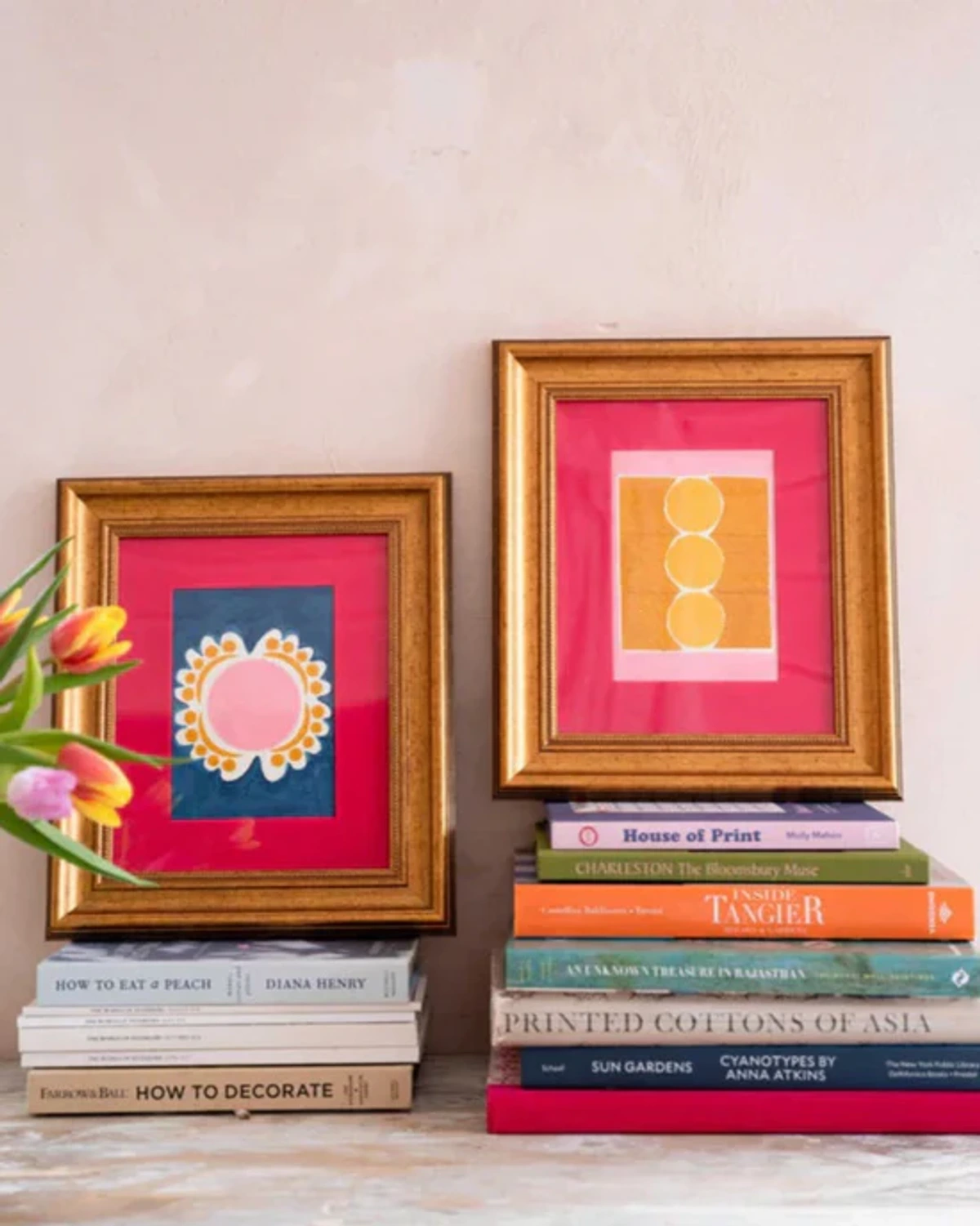
https://www.maisonflaneur.com/blogs/flaneur-magazine/how-to-incorporate-art-in-to-your-home, https://creativecommons.org/licenses/by-nc/4.0/
- Canvas Paintings (with a good varnish): A well-varnished acrylic or oil painting on stretched canvas is reasonably robust. The canvas itself has a bit of natural give, which can absorb minor impacts better than a rigid surface, but it's vulnerable to punctures from sharp objects, especially near the edges or if the canvas is loose. The varnish, typically a synthetic resin, acts as a crucial protective barrier, shielding the paint layer from dust, dirt, moisture, and minor scuffs. It also offers UV protection, preventing colors from fading over time. Just avoid thick impasto that can chip easily because the paint layer is raised and can become brittle when dry. Think of the varnish like a clear coat of armor for your painting – it takes the hit so the paint doesn't have to. I always make sure my own varnishes are applied correctly for maximum protection. The quality of the canvas and stretcher bars also impacts long-term stability.
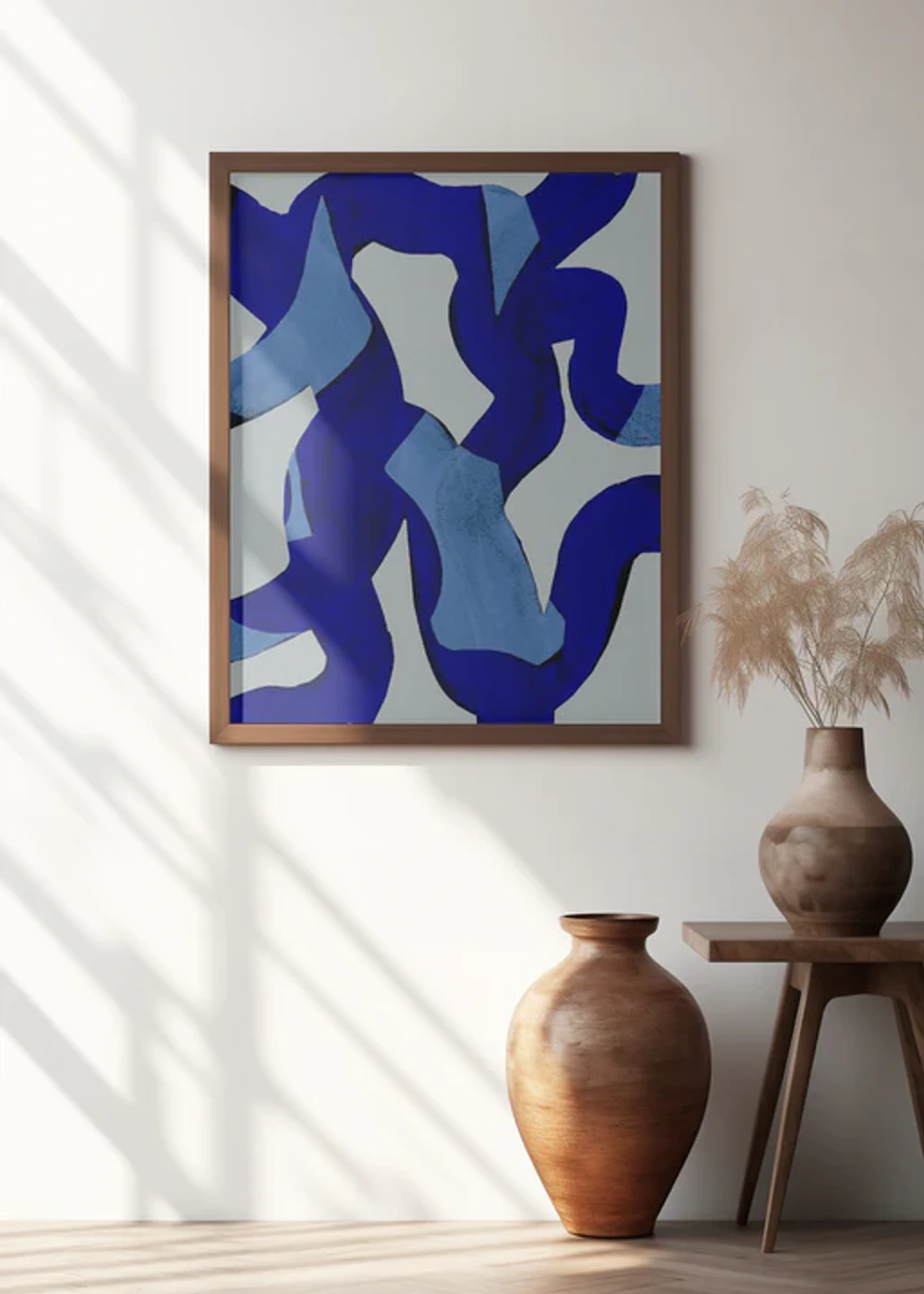
https://www.modernmemorydesign.com/collections/abstract-wall-art-for-home-decor, https://creativecommons.org/licenses/by-nc/4.0/
- Metal Sculptures: Solid metal pieces, like bronze, steel, or aluminum, are generally very durable and easy to clean due to the material's hardness and non-porosity. They can withstand significant bumps and are often suitable for even outdoor placement (though that's a whole other article, like Protecting Outdoor Sculptures!). Surface finishes might require specific care, but the underlying material is tough. Be mindful of the weight of larger metal sculptures, as they require very stable placement or mounting to prevent tipping, which could cause significant damage to the sculpture or surroundings. Even with metal, sharp edges can be vulnerable to denting or scratching if hit directly.
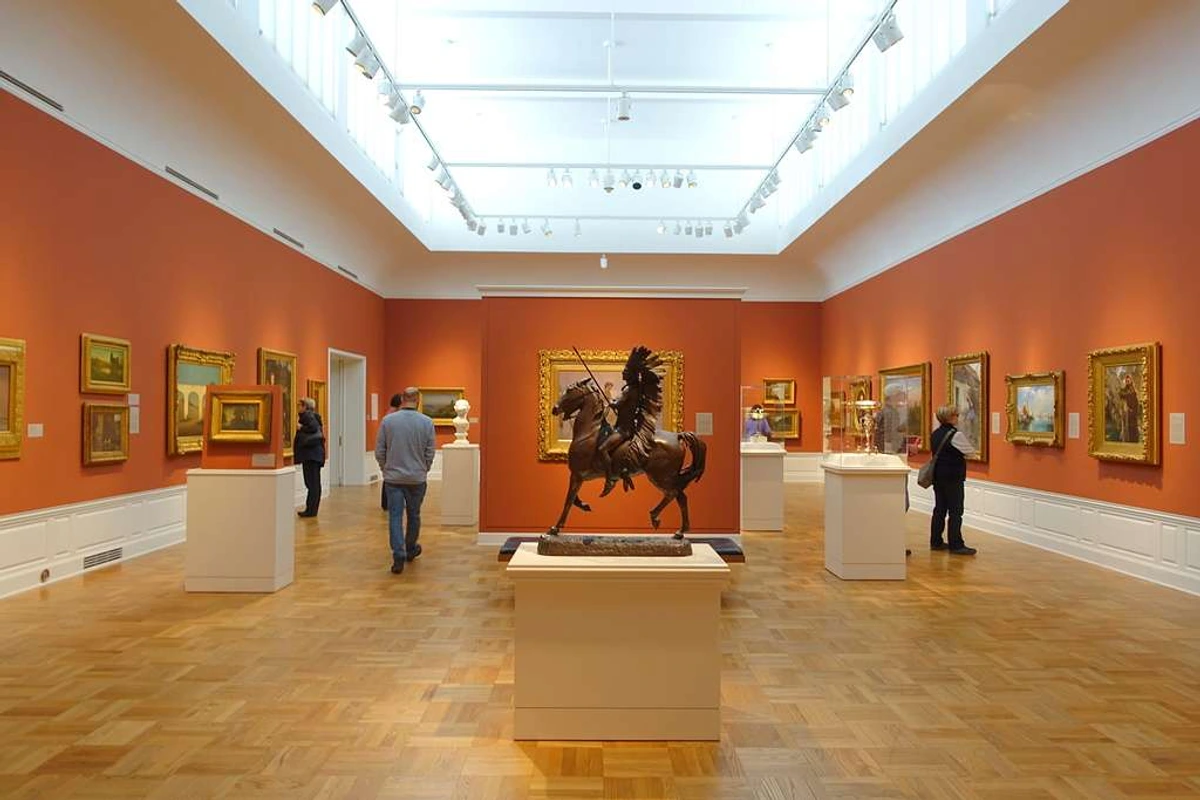
http://commons.wikimedia.org/, https://creativecommons.org/licenses/publicdomain/
- Certain Ceramics or Stone Sculptures: Depending on the clay type, firing temperature, and glazes used, ceramics can be quite tough and water-resistant. High-fired ceramics (like stoneware or porcelain) are generally more durable and less porous than low-fired earthenware due to the vitrification process (where clay particles fuse into a glass-like state, making them harder and less absorbent). Stone is inherently durable due to its mineral composition, though edges can chip if struck sharply. Look for pieces with solid forms and stable bases. Like metal, larger stone pieces can be very heavy and require careful placement to avoid tipping. Porous stone can also be prone to staining if not sealed.

https://pxhere.com/en/photo/676154, https://creativecommons.org/licenses/publicdomain/
- Textile Art (certain types): Some woven or felted pieces can be surprisingly resilient, especially those made with sturdy fibers like wool, cotton, or synthetic blends, and using tight weaving or knotting techniques. The inherent flexibility of textiles can absorb minor impacts. Delicate fibers (like silk) or intricate stitching/embellishments might be more vulnerable to snagging or collecting dirt. Consider if the piece is framed or unframed – framing offers significant protection against dust and physical contact. The rise of textile art is fascinating, and many contemporary pieces are designed with durability in mind. Note that textured textiles can be harder to dust gently and can absorb odors.
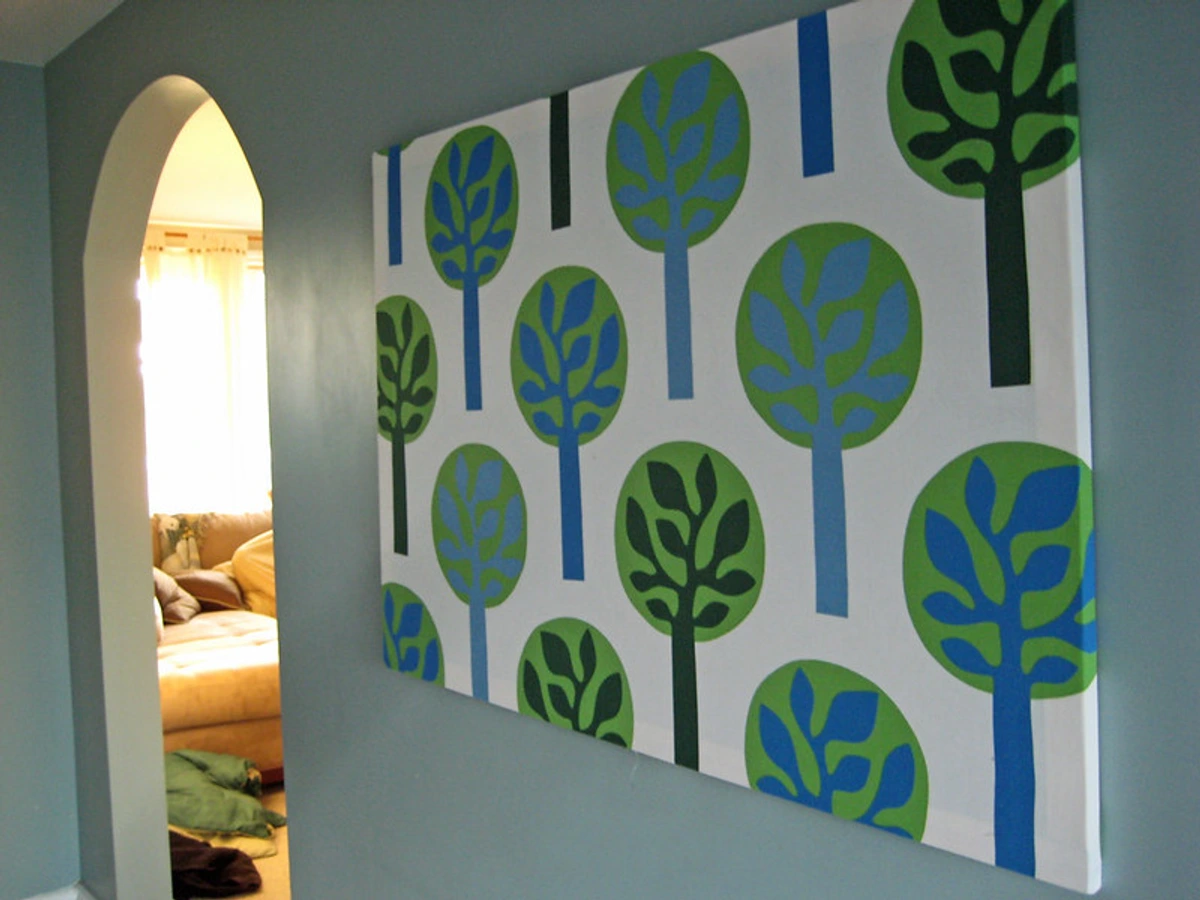
https://www.flickr.com/photos/fiveblondes/2488269660/, https://creativecommons.org/licenses/by-nc-sa/2.0/
- Photography (under acrylic or glass): Like prints, the key here is the protective layer. Mounting a photograph behind acrylic or museum glass offers essential UV protection and a physical barrier against damage. Acrylic is often preferred in high-traffic areas due to its shatter-resistant nature compared to glass. This protects the photo from scratches, smudges, and moisture. Museum glass also offers superior clarity and reduced glare but is prone to breaking. The quality of the print itself and the mounting process are also factors in longevity.
- Mosaics: Depending on the materials (tile, glass, stone) and the substrate they're adhered to, mosaics can be incredibly durable and even waterproof. The hard, non-porous nature of the tesserae (the small pieces) makes them resistant to scratches and easy to wipe clean. The main vulnerability might be the grout lines, which can stain or degrade over time, or individual tesserae chipping if struck sharply. A well-made mosaic on a sturdy backing is very resilient.
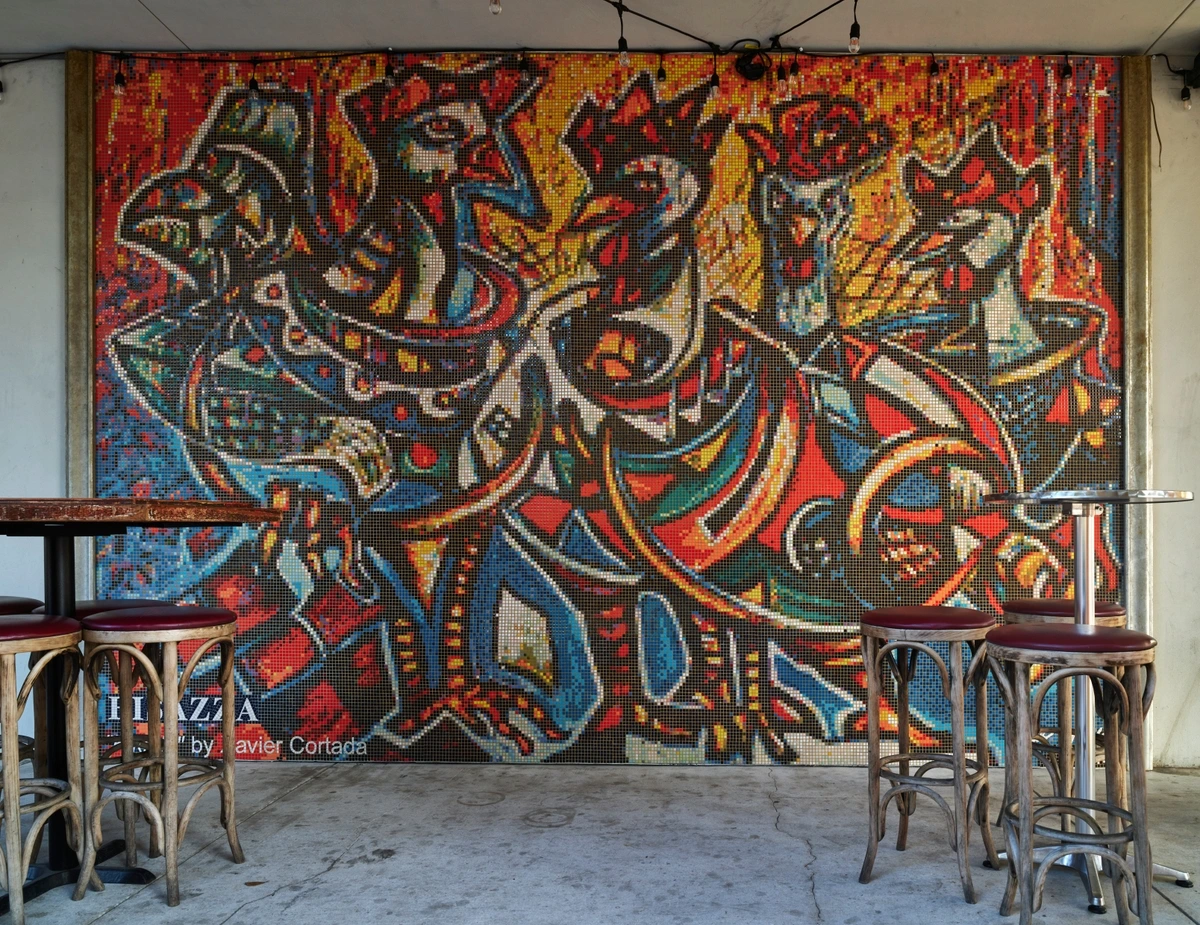
https://www.rawpixel.com/image/8069994/photo-image-wood-pattern-art, https://creativecommons.org/publicdomain/zero/1.0/
- Digital Art on Durable Displays: While the art itself is digital, the display medium matters. High-quality digital displays with protective, anti-glare screens (like those used for digital signage or dedicated art displays) can be surprisingly robust and easy to clean, making digital art a viable option for some high-traffic areas, provided the mounting is secure. The screen itself can still be prone to scratches or cracking if hit hard.
Mediums to be Cautious With
- Watercolor or Pastel on Paper (unframed): Extremely fragile. Paper is susceptible to tears, creases, and moisture damage due to its fibrous nature. Watercolor and pastel pigments are easily smudged or brushed off the surface as they sit on top of the paper rather than being fully absorbed or protected. These absolutely require framing behind glass or acrylic for any protection. Even framed, the paper itself remains vulnerable to environmental changes.
- Drawings or Sketches (unframed): Similar to watercolor, very easily damaged by touch, smudges, and environmental factors. Framing is essential. Collecting drawings and sketches is wonderful, but they need a safe home. Larger unframed drawings are even more prone to accidental creasing or tearing.

- Thick Impasto Paintings: While varnished, the raised texture is inherently prone to chipping because the paint is applied thickly and can become brittle when dry. A sharp knock can easily break off a piece of paint. Think of it like dried mud – a solid surface is fine, but raised bits are vulnerable. What is Impasto Painting? explains this technique.
- Delicate Mixed Media: Pieces with small, attached elements (like collage with thin paper, found objects that aren't securely fixed) can lose bits easily. The bond holding different materials together can be vulnerable to impact or vibration. Buying mixed media art is exciting, but check how securely elements are attached. These pieces are prone to elements detaching.
- Unfired Clay or Plaster Sculptures: Very brittle and easily broken, scratched, or dented due to their inherent material properties before firing or hardening. These are best kept in low-traffic, protected environments. They are highly susceptible to abrasion and impact.
- Encaustic Paintings: Made with pigment mixed with hot wax, encaustic is beautiful but sensitive to temperature fluctuations (can melt or crack) and easily scratched or dented. They require careful handling and placement away from heat sources or direct sunlight. They are vulnerable to heat damage and surface scratching.
- Glass Art (unsecured): While glass itself is rigid, sculptures or delicate blown glass pieces are obviously prone to shattering if knocked over. Placement is absolutely key for glass art. They are highly susceptible to breaking from impact or tipping.
- Art with Organic or Perishable Materials: Pieces incorporating elements like dried flowers, leaves, food items, or certain natural fibers that haven't been properly preserved are inherently fragile and susceptible to decay, insect damage, or mold growth, regardless of traffic. These require controlled environments and are generally unsuitable for busy, fluctuating areas.
Even some of the mediums listed as 'cautious' can work in high-traffic areas if they are properly protected, which brings us to the next point. If you're curious about different types of art, I've shared my thoughts on that.
There's also the question of cost versus durability. A highly durable metal print might cost more upfront than a paper print, but if it's going in a busy hallway, the long-term value and reduced worry might make it the more economical choice. Conversely, if you love delicate watercolors, you might decide to buy less expensive prints for high-traffic areas and save the originals for quieter rooms. It's a balance, isn't it? Balancing the desire for the original with the reality of a busy life. To help visualize this, let's add a relative cost indicator to the comparison table.
Here's a quick comparison:
Durable Choices | Cautious Choices | Key Protection/Consideration | Primary Vulnerabilities in High-Traffic | Ease of Cleaning | Relative Cost |
|---|---|---|---|---|---|
| Prints (Metal, Acrylic, Framed) | Watercolor/Pastel (unframed) | Framing Essential | Dents (Metal), Scratches (Acrylic), Edge/Corner Damage | Easy | $ - $$$ |
| Varnished Canvas Paintings | Drawings/Sketches (unframed) | Varnish Crucial | Punctures, Chipping (Impasto), Edge/Corner Damage | Moderate | $$ - $$$$ |
| Metal Sculptures | Thick Impasto Paintings | Stable Placement | Dents, Surface Scratches, Edge/Corner Damage | Easy | $$$ - $$$$$ |
| Certain Ceramics/Stone Sculptures | Delicate Mixed Media | Stable Placement, Secure Fix | Chipping (Edges), Staining (Porous), Edge/Corner Damage | Moderate | $$ - $$$$ |
| Certain Textile Art (Sturdy, Framed) | Unfired Clay/Plaster Sculptures | Framing Recommended | Snagging, Odor Absorption | Difficult | $ - $$$ |
| Framed Photography (Acrylic/Glass) | Delicate Textile Art (Unframed/Fine) | Framing Essential | Scratches (Acrylic), Breaking (Glass) | Easy | $$ - $$$$ |
| Mosaics | Encaustic Paintings | Grout Maintenance | Grout Staining, Tesserae Chipping | Easy | $$$ - $$$$$ |
| Digital Art (Durable Display) | Glass Art (unsecured) | Secure Mounting | Screen Scratches/Cracking | Easy | $$$$ - $$$$$ |
| Art with Organic/Perishable Materials | Controlled Environment Essential | Decay, Pests, Fragility | Difficult | $ - $$$ | |
| Stable Placement | Breaking, Tipping | N/A | $$ - $$$$$ |
The Power of Protection: Framing and Placement
Sometimes, it's not just the art itself, but how you present and protect it. Framing is your first line of defense.
- Glazing (Glass or Acrylic): This is crucial for prints, photos, and works on paper. Glazing refers to the protective sheet (glass or acrylic) placed in front of the artwork within the frame. Acrylic (Plexiglass) is lighter and shatter-resistant, making it a much safer choice than glass in areas where it might get hit. Look for UV-protective options to prevent fading, especially if the area gets some sun – something I've learned the hard way with early pieces! My guide on framing your artwork goes into more detail. Consider anti-reflective glazing too; it not only improves viewing but can reduce the temptation for people to touch the surface to see better. For truly valuable or irreplaceable pieces, consider conservation framing, which uses archival-quality materials like acid-free matting and backing, along with UV-protective glazing, to create a micro-environment that protects the artwork from environmental degradation over the long term. Archival materials are specially processed to be free of acids and other chemicals that can break down paper and other art materials over time, preventing yellowing, brittleness, and other forms of deterioration. This is where professional conservation principles come into play, creating a buffer against the outside world.
- Sturdy Frames: Choose solid frames that can withstand a bump. Avoid flimsy materials. Metal or solid wood frames are generally more robust than thin plastic or composite options. Frame materials like metal are often easier to wipe clean than porous wood finishes. Consider the frame material when cleaning – harsh chemicals can damage finishes. Also, pay attention to the finish itself; a sealed or varnished wood frame will be more resistant to moisture and stains than raw or lightly finished wood.
- Mounting: Ensuring the artwork is securely mounted within the frame and the frame is securely attached to the wall is paramount. A falling piece is the biggest risk! For larger or heavier pieces, consider using secure mounting systems like D-rings and wire (properly rated for weight) or cleat systems (interlocking brackets that distribute weight evenly), such as French cleats or security hooks. These are far more reliable than simple nails or picture hooks for anything substantial, offering increased stability against bumps and vibration. Also, remember that different wall types – drywall, plaster, brick, concrete – require specific anchors and techniques for secure hanging. Professional art installation services are highly recommended for valuable or heavy pieces to ensure they are hung safely and securely, especially in busy areas where stability is non-negotiable. They can also help assess the wall type and recommend the appropriate anchors or finding studs for maximum security. Vibration from heavy foot traffic or nearby doors can slowly loosen inadequate fixings over time, leading to a fall. Consider the texture of the wall surface too; a rough wall can cause abrasion to the back of the frame or canvas over time due to subtle movements or vibration.
Hanging Art in Rental Properties
Living in a rental doesn't mean you have to sacrifice displaying art in high-traffic areas, but it does require a bit more thought about wall preservation. Traditional nails and screws can leave noticeable holes. For lighter pieces, adhesive strips or hooks (like Command Strips) can be a good option, but be sure to check the weight limit and follow the instructions carefully to avoid paint damage upon removal. For slightly heavier items, exploring wall anchors designed for minimal damage (often smaller holes that are easier to patch) might be necessary. Always get your landlord's permission before making any significant changes to the walls. It's a balancing act between enjoying your space and respecting the property – something I've definitely navigated myself over the years!
Placement Strategies:
- Avoid Vulnerable Spots: In a tight hallway, placing art right where shoulders or bags brush past is asking for trouble. Consider placing pieces higher or lower. I once had a piece in a narrow entryway that constantly got bumped by backpacks – lesson learned! Art placed right on a corner is also highly vulnerable to bumps from people turning or carrying objects.
- Consider Height of Hazards: Think about what is likely to cause damage. If you have small children or pets, low-level art is at risk from hands, toys, or tails. If people are often carrying boxes or bags, mid-level art might be vulnerable. Placing art higher up can sometimes mitigate risks from floor-level activity.
- Use Furniture as a Buffer: A sofa, console table, or even a sturdy armchair can act as a buffer, protecting the art behind it from direct contact.
- Consider Alcoves or Shelves: Recessed areas offer natural protection from passing traffic.
- Secure Sculptures: If placing a sculpture on a pedestal or table, ensure it's stable and won't easily tip over. Heavy, low pieces are generally safer than tall, slender ones. Consider using museum wax or a similar adhesive for added stability on smooth surfaces. Museum wax is a non-damaging, removable putty that provides temporary grip, preventing accidental nudges from sending a piece tumbling. It's great for adding a little extra security to objects on shelves or tables, but it's not a substitute for proper mounting for heavier items.
- Mind the Scale: Beyond just vulnerability, consider the scale of the art relative to the space. An oversized piece in a cramped hallway can feel overwhelming and is more likely to be accidentally touched. Conversely, tiny delicate pieces might get lost or overlooked and are still vulnerable if not properly protected and placed. It's a balance of visual impact and practicality.
- Consider Lighting: High-traffic areas often have varying light sources. Placing framed art opposite windows or under direct spotlights can cause glare, making the art hard to see and potentially tempting people to touch the surface to get a better look. Anti-reflective glazing can significantly improve visibility and reduce this temptation. Also, be mindful of heat from spotlights (especially older halogen types), which can damage sensitive materials over time. LED lighting is generally safer in this regard due to lower heat and minimal UV output, but even LEDs can cause fading over long periods if the art is sensitive and unprotected. Consider the Color Rendering Index (CRI) of your lighting too; high CRI lights (closer to 100) will show the art's true colors, which is important for appreciation, but doesn't directly impact durability.
- Temporary or Rotating Displays: For areas that see extreme traffic or where you like to change things up often, consider using high-quality prints, posters, or even art decals. These are generally less expensive to replace if damaged and allow for flexibility. Using a gallery hanging system with rails and adjustable wires can make swapping pieces in and out much easier and safer than repeatedly putting holes in the wall. For decals, look for temporary adhesives designed for walls to avoid paint damage. Art rental services can also be a great option for high-risk areas, allowing you to enjoy different pieces without the long-term commitment or risk of ownership.
For example, a large, durable metal print or a securely mounted canvas painting can work well in an office lobby, while a sturdy ceramic sculpture might be suitable for an entryway console table, provided it's stable. I've also shared thoughts on how to display different types of art, which might give you some ideas for tricky spots.
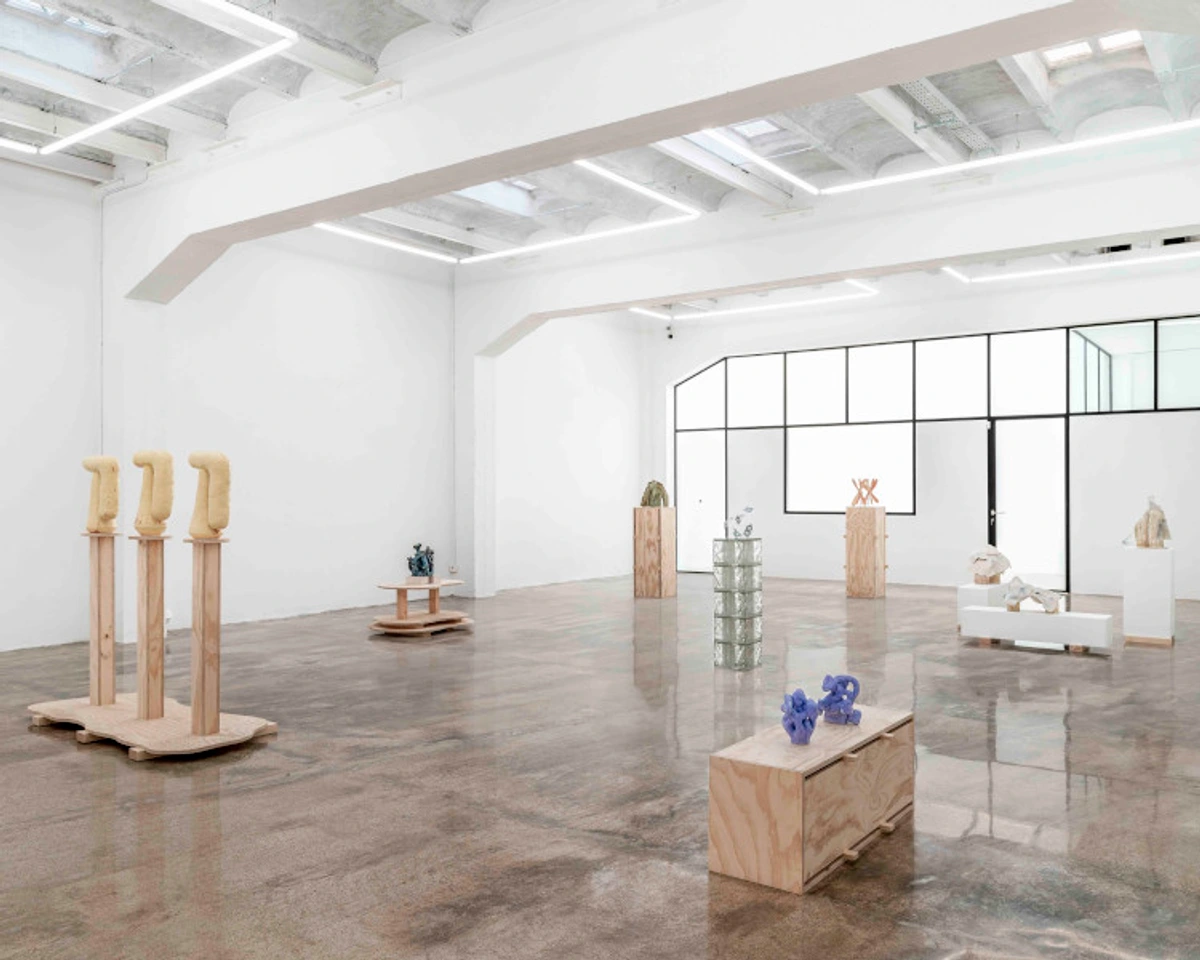
https://www.widewalls.ch/magazine/antoni-ferrer-interview, https://creativecommons.org/licenses/by/4.0/
Cleaning and Maintenance: Keeping it Fresh
Even durable art in high-traffic areas will need cleaning. Dust happens. Accidental splashes happen. Controlling environmental factors like humidity and temperature, especially near external doors or windows or vents, is also part of long-term care for certain mediums. Pollutants in urban air, soot from candles or fireplaces, or cooking grease from nearby kitchens can also settle on surfaces. Preventative maintenance is key – a little regular care goes a long way. Let's face it, dust bunnies seem to have a particular fondness for settling on anything beautiful. I once had a piece near a kitchen that developed a faint greasy film... lesson learned about placement and regular, gentle cleaning!
- Regular Dusting: Gently dust framed works, varnished paintings, and sculptures regularly with a soft, clean brush (like a soft-bristled paintbrush or makeup brush dedicated to art) or a dry microfiber cloth. This prevents dust buildup, which can become harder to remove over time and can even scratch delicate surfaces. Avoid using feather dusters, as they tend to just move dust around and can potentially scratch surfaces or snag on delicate textures. Be extra gentle with textured surfaces like certain textiles or unvarnished areas – dust can really cling to texture! Consider the type of dust too – gritty dust from construction nearby is more abrasive than typical household dust. Always wash your hands thoroughly before handling art, even if you plan to wear gloves, to avoid transferring unseen oils or grime.
- Framed Works: For framed pieces with glazing, a gentle wipe with a microfiber cloth is usually sufficient for the frame and glazing. For acrylic glazing, use a cleaner specifically designed for it (often available from framing suppliers) to avoid scratches – standard glass cleaner containing ammonia or alcohol can damage acrylic. For glass, standard glass cleaner is fine. Always spray cleaner onto the cloth, not directly onto the frame or art, to prevent liquid from seeping under the glazing. Be mindful of the frame material too – some finishes can be damaged by harsh chemicals. Clean the frame itself with a product appropriate for its material (wood, metal, etc.). Avoid using aerosol sprays like hairspray or air fresheners near framed art, as they can deposit a sticky film that attracts dust and is difficult to remove.
- Varnished Paintings: As mentioned, a soft brush or dry microfiber cloth can remove dust. For anything more serious, like accumulated grime or sticky residue, consult a professional art conservator. Never use water or cleaning products on an unvarnished painting! The paint layer is exposed and vulnerable. Using solvents or harsh chemicals can dissolve or damage the paint itself. Cleaning Acrylic Paintings has specific tips. If you're dealing with soot or grease, professional conservation is almost always required – attempting to clean these yourself can push the grime deeper into the paint layers.
- Sculptures: This depends heavily on the material. Metal might need occasional polishing or wiping with a product suitable for that specific metal (e.g., a soft cloth for bronze, specific metal cleaners if recommended by the artist/gallery). Stone can often be gently cleaned with water, but porous materials might stain – always test first in an inconspicuous spot! High-fired ceramics can usually be wiped clean with a damp cloth, but avoid getting unglazed areas wet. Avoid abrasive cleaners that can scratch surfaces. For intricate sculptures, a soft brush can get into crevices. For outdoor sculptures, cleaning methods will differ significantly Protecting Outdoor Sculptures.
- Textile Art: This is tricky. Gentle dusting with a soft brush is usually the safest bet. For framed textiles under glazing, clean the glazing as described above. For unframed or highly textured pieces, professional textile conservation might be needed for deeper cleaning or stain removal. Avoid vacuuming directly on delicate textiles unless using a very low setting and a protective screen. Textiles can also absorb odors from the environment (cooking, smoke), which are very difficult to remove.
- Pest Prevention: In areas prone to pests like silverfish, which can feed on paper, glue, and canvas sizing, proper framing and sealing can offer protection. Regular dusting also helps remove potential food sources. Monitoring humidity can also deter pests.
- Environmental Monitoring: Especially near windows, doors, or vents, temperature and humidity can fluctuate significantly. Using a simple hygrometer/thermometer can help you monitor these conditions. While you might not be able to control them perfectly in a high-traffic area, being aware can inform your art choices and placement, and alert you if conditions are consistently poor for sensitive pieces. High humidity can encourage mold growth, while low humidity can cause materials like wood or canvas to crack.
- When to Call a Conservator: While regular cleaning is manageable, there are times you should absolutely call a professional art conservator. This includes dealing with mold or mildew growth, significant grime that won't lift with gentle dusting (like soot or grease), tears or punctures in canvas/paper, cracking or flaking paint, water damage, or any signs of structural deterioration. Don't try to fix these yourself – you could cause more harm. Painting Restoration is a complex field requiring specialized knowledge and materials.
- Testing Cleaning Methods: Always test any cleaning method, even gentle ones, on a small, inconspicuous area first. This is crucial, especially for older or potentially sensitive pieces, to ensure it doesn't damage the surface or finish. A small test area, perhaps on the edge or back, can save you from a big mistake.
- Handling: When handling art, especially unframed pieces or delicate sculptures, consider wearing clean, lint-free gloves. This prevents transferring oils, dirt, or fingerprints from your hands onto the artwork. Even clean hands have natural oils that can attract dust and grime over time.
Knowing how to clean different types of art is essential for long-term care. Regular, gentle cleaning is an investment in the longevity of your art, especially in environments where dust and grime accumulate faster.
What to Do If Damage Occurs
Despite all precautions, accidents can still happen. If a piece of art in a high-traffic area gets damaged, try to stay calm and follow these steps:
- Assess the Damage: Carefully examine the piece to understand the nature and extent of the damage (a scratch on the frame, a tear in the canvas, a chip in a sculpture). Document it thoroughly with photos from different angles. Do not touch the damaged area more than necessary, as this could worsen the damage or transfer oils and dirt.
- Secure the Artwork: If the piece is unstable or at risk of further damage, carefully remove it from display if possible and move it to a safe, stable environment away from traffic, light, and fluctuating conditions. Do not attempt to clean or repair it yourself immediately.
- Contact Professionals: If the piece is valuable or the damage is significant, contact a professional art conservator immediately for assessment and advice. They can determine the best course of action for repair or stabilization. If the piece is insured, contact your art insurance provider to report the damage and discuss the claims process – they will likely require documentation and may recommend a specific conservator.
- Avoid DIY Repairs: Resist the urge to try and fix the damage yourself, especially for original or valuable pieces. Improper repair can cause more harm, reduce the value of the artwork, and make professional restoration more difficult or even impossible. Leave it to the experts.
Taking swift, appropriate action can make a big difference in the potential for successful restoration.
Art Insurance: A Layer of Peace of Mind
We've talked about choosing durable art and protecting it with smart placement and framing. But what about the unexpected? Accidents happen, and sometimes, despite our best efforts, a valuable piece can be damaged or even stolen. This is where art insurance comes in.
Art insurance is specifically designed to cover the unique risks associated with owning art, such as accidental damage, theft, or loss. Unlike standard homeowner's insurance, which may have limitations on the value of collectibles or specific types of damage, a dedicated art policy provides broader coverage. If you have pieces of significant value displayed in high-traffic areas, especially those that might be more vulnerable despite precautions, insuring them offers a crucial layer of financial protection. You can often obtain art insurance through specialized art insurance brokers or by adding a rider (an endorsement) to your existing homeowner's or renter's insurance policy. It's a practical step to take, particularly when balancing the joy of living with art with the inherent risks of a busy environment. It's a personal calculation of how much risk you're comfortable with, but for truly valuable pieces, it's definitely worth exploring. Art as an Investment often involves considering insurance as part of the overall picture.
I remember hearing a story from a fellow artist whose large, framed print was knocked off the wall by a delivery person in a busy studio hallway. The frame was shattered, and the print was creased. Thankfully, they had a rider on their insurance that covered the replacement cost. It was a small thing, but it saved them a significant amount of money and hassle. It made me think about my own pieces and where they hang – a little peace of mind can go a long way. A crucial step for insurance is documenting your art before anything happens. Take clear photos of the piece, keep receipts, and get appraisals for valuable works. This documentation is essential if you ever need to file a claim.
Embracing Reality (and Maybe a Little Chaos)
Look, life happens. Even with the best intentions and the most durable art, something might eventually occur. A small scratch on a frame, a tiny ding on a canvas edge. And you know what? That's okay.
Art in your home is meant to be lived with. These little imperfections can become part of its story, a testament to the life it shares with you. I mean, my own studio is a glorious mess of paint splatters and happy accidents (
). It's part of the process, part of the journey. I've definitely put a thumbprint on a wet painting or two in my time – thankfully, usually my own work! Sometimes, the most loved pieces are the ones that show a little wear and tear from being truly part of your life. It's a bit like the lines on your face or the scuffs on your favorite pair of boots – they tell a story.
If you're truly worried about preserving a valuable or irreplaceable piece, a high-traffic area is probably not the place for it. Save those for quieter rooms or invest in museum-quality protection and professional installation to mitigate risk in a busy area. As mentioned, considering art insurance is also a wise layer of protection against unforeseen accidents. But also consider the emotional value of a piece. Some art might not be worth a fortune financially, but it holds deep personal meaning. Placing such a piece in a high-risk area requires weighing that emotional value against the potential for damage. Sometimes, the joy of seeing it every day outweighs the risk, and sometimes it doesn't. It's a deeply personal decision. You might even consider using a less valuable print or reproduction in a high-risk spot as a kind of "sacrificial" piece – something you love seeing there, but wouldn't be heartbroken if it took a hit.
How do you feel about your art showing signs of life? Are you a perfectionist, or do you embrace the story that a little wear and tear can tell? It's a fascinating question, isn't it, this balance between preservation and presence.
But for most art, especially prints or contemporary pieces designed to be part of modern living, a little resilience goes a long way. Choose wisely, protect reasonably, and then... relax. Enjoy the art. Let it be part of the life happening around it. How do you balance the desire for perfect preservation with the joy of living with art every day? It's a personal journey.
If you're looking for art that's designed with modern living in mind, feel free to explore my collection. I create pieces that I hope can bring joy and color into your space, even the busy ones.
Key Takeaways for High-Traffic Art
To sum it all up, here are the essential points to remember when choosing and displaying art in busy areas:
- Choose Durable Mediums: Opt for materials inherently resistant to physical contact and environmental factors, like metal prints, acrylic prints, varnished canvas, or sturdy sculptures. Consider the quality of the materials and why their properties make them durable (e.g., non-porosity, vitrification). Be mindful of textures that might be harder to clean and the vulnerability of edges and corners.
- Prioritize Protection: Framing with shatter-resistant acrylic glazing and using robust, secure mounting hardware (like cleat systems) are your best defenses. Consider anti-reflective and UV-protective glazing, and for valuable pieces, conservation framing using archival materials. Ensure mounting is appropriate for the wall type and can withstand vibration, and consider the wall texture. If renting, explore less invasive hanging methods like adhesive strips or specific wall anchors.
- Strategize Placement: Avoid vulnerable spots like narrow passages at eye level or sharp corners. Use furniture or architectural features as buffers. Consider the height of potential hazards. Think specifically about the unique risks of areas like kitchens, kids' rooms, offices (including security hardware), and bathrooms.
- Maintain Gently: Regular, gentle dusting (avoiding feather dusters) is crucial. Wash hands before handling art. Be mindful of specific grime like soot or cooking grease, which often require professional help. Use appropriate cleaning methods for different materials (e.g., specific acrylic cleaners, testing water on stone). Avoid aerosol sprays nearby. Monitor environmental conditions (temperature, humidity) using a hygrometer/thermometer, especially near external walls or vents. Know when to clean yourself and when to call a professional conservator. Test any cleaning method on an inconspicuous area first. Remember to clean the frame itself with an appropriate product.
- Assess Risk vs. Value: For highly valuable pieces, consider quieter locations, museum-quality protection, professional installation, and art insurance. Consider the trade-off between cost and durability, and weigh the emotional value of a piece against the risk. Don't be afraid to use "sacrificial" pieces in high-risk spots.
- Plan for Accidents: Know what steps to take immediately if damage occurs – assess, secure, and contact professionals (conservator, insurer). Do not touch the damaged area unnecessarily. Avoid DIY repairs.
- Document Your Art: For insurance or personal records, take photos and keep receipts/appraisals before any damage occurs.
- Embrace Imperfection: A little wear can add to the story of a piece that's truly lived with. Consider your own comfort level with imperfections.
Frequently Asked Questions (FAQ)
Still have questions buzzing around your head? Here are some common ones I hear:
What should I do immediately if a piece of art gets damaged in a high-traffic area?
First, assess the damage calmly and document it with photos. If it's minor (a small scratch on the frame), you might be able to live with it or find a simple repair solution. If it's significant (a tear, a deep scratch on the artwork itself, a broken frame), carefully remove the piece from the wall if safe to do so, store it in a stable environment away from further risk, and contact a professional art conservator for advice. Do not touch the damaged area more than necessary. If the piece is insured, contact your provider. Do NOT attempt complex repairs yourself.
What type of art is most durable for a busy hallway?
Prints on metal or acrylic, or well-varnished canvas paintings are generally good choices. Framed paper prints or posters under acrylic glazing are also viable. Consider the framing too – acrylic glazing is safer than glass. Secure mounting is also key to prevent damage from vibration or accidental bumps. Sturdy textile art, properly mounted, can also work. Think about the height of potential hazards like backpacks and the vulnerability of edges and corners.
Can I hang original paintings in a high-traffic area?
Yes, but choose wisely. Opt for robust mediums like varnished acrylic or oil on canvas. Avoid delicate works on paper or pieces with fragile elements like thick impasto. Ensure it's securely hung using appropriate hardware for the wall type and consider protective placement (e.g., behind furniture). Consider the value and your comfort level with potential risk. For valuable originals, conservation framing and professional installation are highly recommended.
How can I protect framed art from getting bumped?
Use sturdy frames and shatter-resistant acrylic glazing. Hang the art securely using appropriate mounts (like D-rings or cleat systems) that can withstand vibration, ensuring the hardware is suitable for your specific wall type. Consider placement – avoid narrow passages at eye-level, corners, or areas directly behind doors. Placing it behind a sofa or console table can offer a buffer. Consider anti-reflective glazing to reduce glare that might tempt people to touch the surface to get a better look. Be mindful of the frame's edges and corners.
Is it okay if my art gets a little damaged in a busy area?
Ultimately, that's a personal decision. For many, minor imperfections are part of the art's story and connection to the home. If preservation is paramount, choose a less busy location or invest in museum-quality protection and potentially art insurance. It's about balancing the joy of living with art and the desire for perfect condition. Also consider the emotional value of the piece – is the joy of seeing it daily worth the risk of minor wear? Using a "sacrificial" piece might be an option.
What's the best way to clean art in a high-traffic area?
Regular, gentle dusting with a soft brush or dry microfiber cloth is the first step. Avoid feather dusters. Wash hands before handling. For framed works with glazing, wipe the frame and glazing with a microfiber cloth (using appropriate cleaner for acrylic). For varnished paintings, use a soft brush or dry cloth for dust. Always avoid water or harsh cleaners on the artwork itself unless specifically recommended for that medium and condition. Be particularly cautious with airborne grime like soot or cooking grease; these often require professional cleaning. Avoid aerosol sprays nearby. Test any cleaning method on an inconspicuous area first. When in doubt, consult a professional art conservator. Remember to clean the frame itself with an appropriate product.
Are certain types of art more suitable for homes with young children or specific types of pets?
Absolutely. For homes with young children or active pets, prioritize wall-mounted art over floor-standing sculptures (unless very heavy and stable). Framed prints under acrylic, metal prints, or sturdy canvas paintings are generally safer choices than delicate works on paper or pieces with small, easily breakable elements. Consider placing art higher up, out of reach of little hands or wagging tails. Washable surfaces like metal or acrylic prints are also a plus, especially in kids' rooms or near pet areas. Avoid delicate textiles that can be easily snagged or chewed. Choosing Art for Homes with Kids & Pets has more tips.
What are the benefits of professional art installation, especially for high-traffic areas?
Professional installers have the expertise and specialized hardware to ensure your artwork is hung securely and safely, minimizing the risk of it falling due to inadequate mounting or vibration. They can assess the wall type and the weight of the piece to choose the most appropriate system (like cleat systems for heavy works) and use the correct anchors. This provides peace of mind, knowing your art is stable even in busy environments, and can be particularly important for valuable pieces.
Should I consider temporary art options for very high-risk areas?
Yes, absolutely! For areas prone to frequent bumps, spills, or high humidity, using high-quality posters, temporary art decals, or rotating displays of less valuable prints can be a smart strategy. This allows you to enjoy art in these spaces without the constant worry of damaging a valuable piece. Using a gallery hanging system can make rotating pieces much easier. Art rental services are also a good option.
How does lighting affect art in high-traffic areas?
Beyond causing glare that makes viewing difficult, direct sunlight or spotlights can cause UV damage and fading over time. Heat from lights or nearby vents can also affect sensitive materials. Consider using UV-protective glazing for framed works and avoid placing art directly in harsh light or near heat sources. Anti-reflective glazing can help with glare. LED lighting is generally preferable to halogen due to less heat and UV output, but even LEDs can cause fading over long periods if the art is sensitive and unprotected. Consider the Color Rendering Index (CRI) for how accurately colors are displayed.
Is durable art always more expensive?
Not necessarily. While some highly durable options like large metal prints or conservation framing can have a higher upfront cost, they might be more economical in the long run if they prevent damage and the need for costly repairs or replacement. Framed posters or sturdy canvas prints can be relatively affordable yet offer good durability when properly protected and placed. It's about finding the right balance for your budget, the specific location, and the value (both monetary and emotional) of the artwork.
How do I clean specific types of art like metal prints or ceramics?
For metal prints, a soft cloth and mild soap and water are usually sufficient. Avoid abrasive cleaners. For ceramics, high-fired pieces can often be wiped with a damp cloth; porous or unglazed areas require more caution and potentially just gentle dusting. Always test a small, hidden area first. For detailed cleaning instructions for various mediums, consulting a professional conservator or a guide like How to Clean Different Types of Art is recommended.
How does the type of high-traffic area (e.g., public vs. private home) change the considerations?
The core principles of durability, protection, and placement remain the same, but the level of risk and the type of hazard can differ. Public spaces (like office lobbies) might have higher foot traffic, require more robust security against theft/tampering (e.g., security hooks), and need easier-to-clean surfaces due to more varied contact. Private homes might have specific hazards like pets, children, or cooking grease, requiring tailored material choices and placement strategies. The emotional value of the art might also play a larger role in a private home.
Choosing art for high-traffic areas doesn't have to be stressful. With a little thought about durability and protection, you can confidently display pieces that bring you joy, even in the busiest corners of your world. It's about finding that sweet spot where beauty meets resilience.
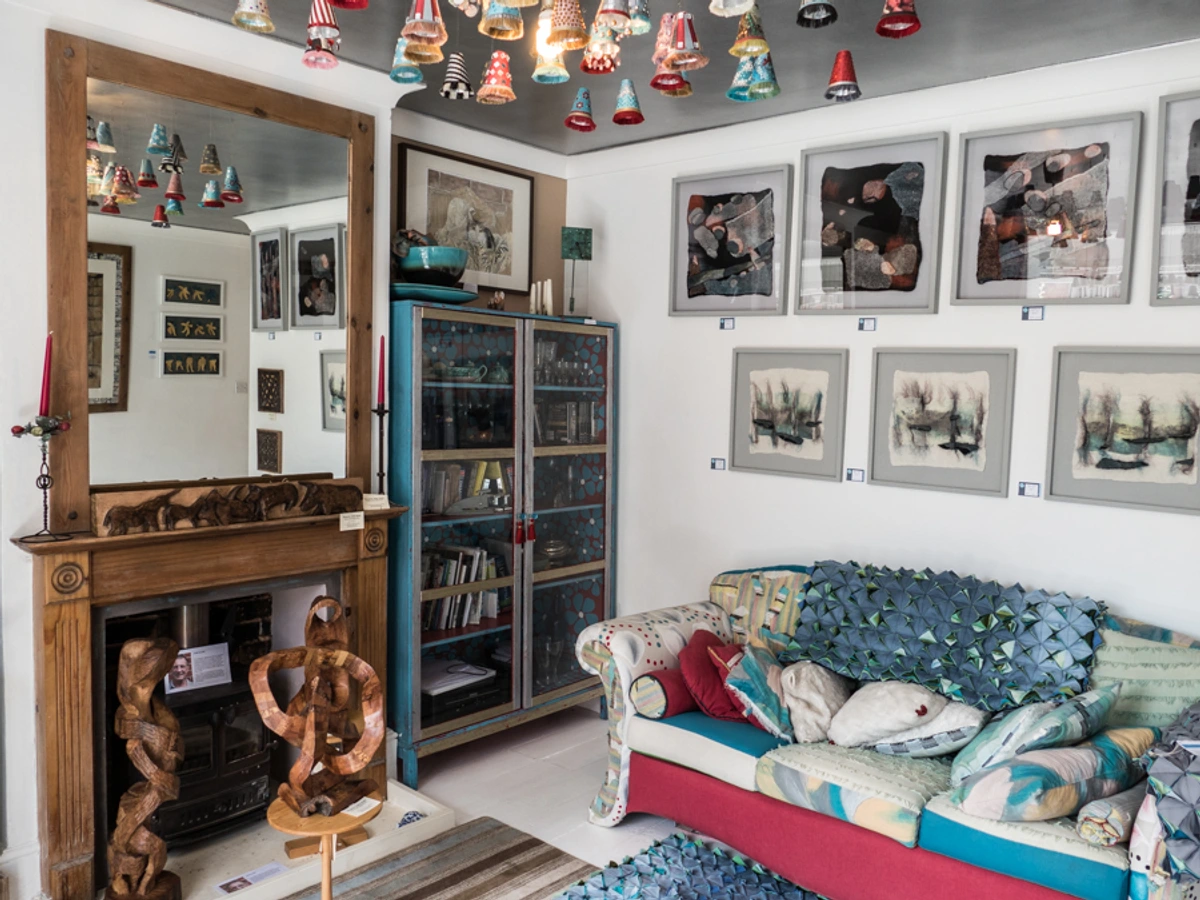
https://www.flickr.com/photos/romseyfestival/35895267135, https://creativecommons.org/licenses/by-nc/2.0/deed.en
Thanks for reading along on this slightly chaotic, very real-life art journey. I hope it helps you find the perfect balance for your own space.
If you're looking for art that's designed with modern living in mind, feel free to explore my collection. I create pieces that I hope can bring joy and color into your space, even the busy ones.




